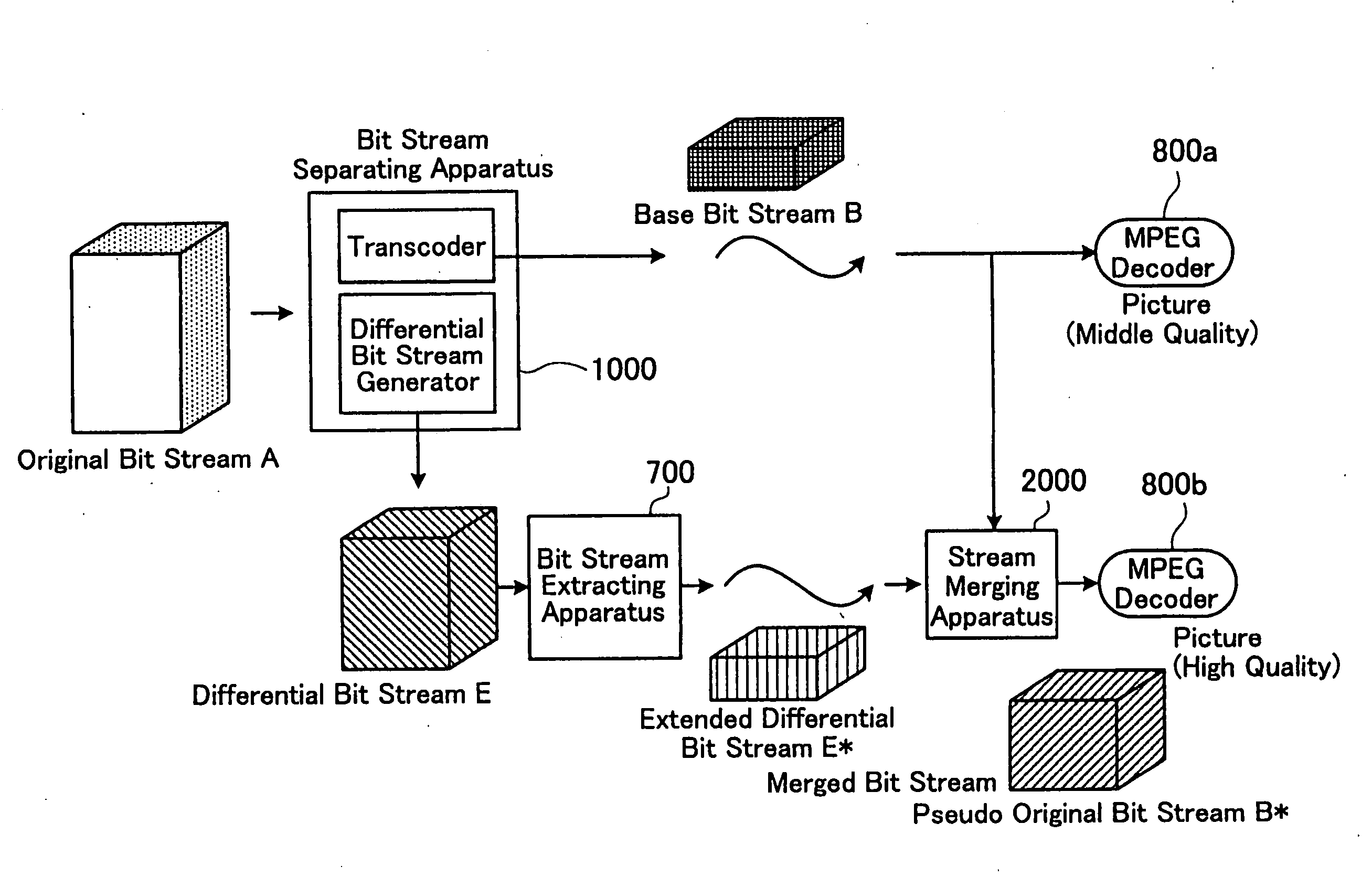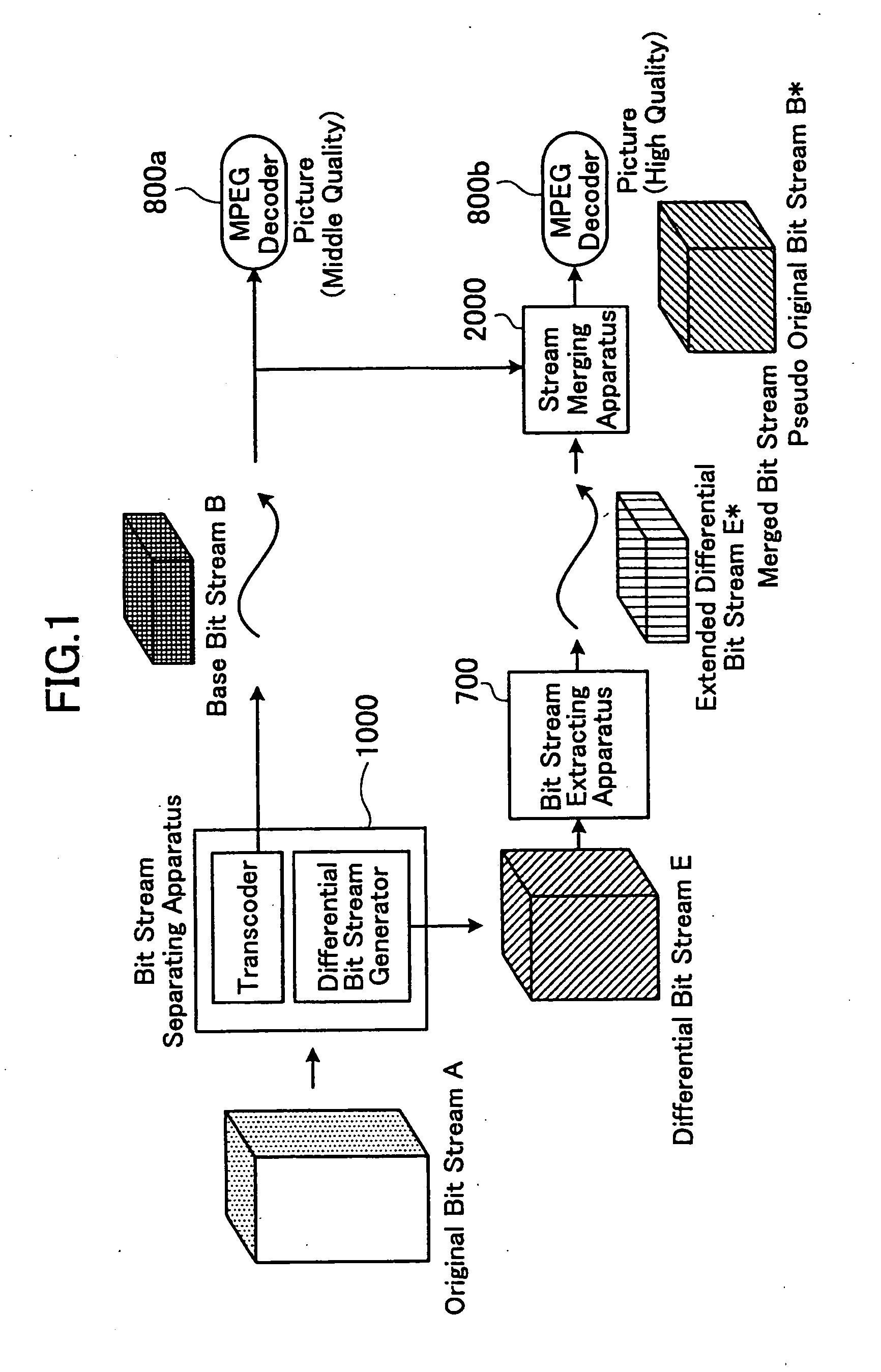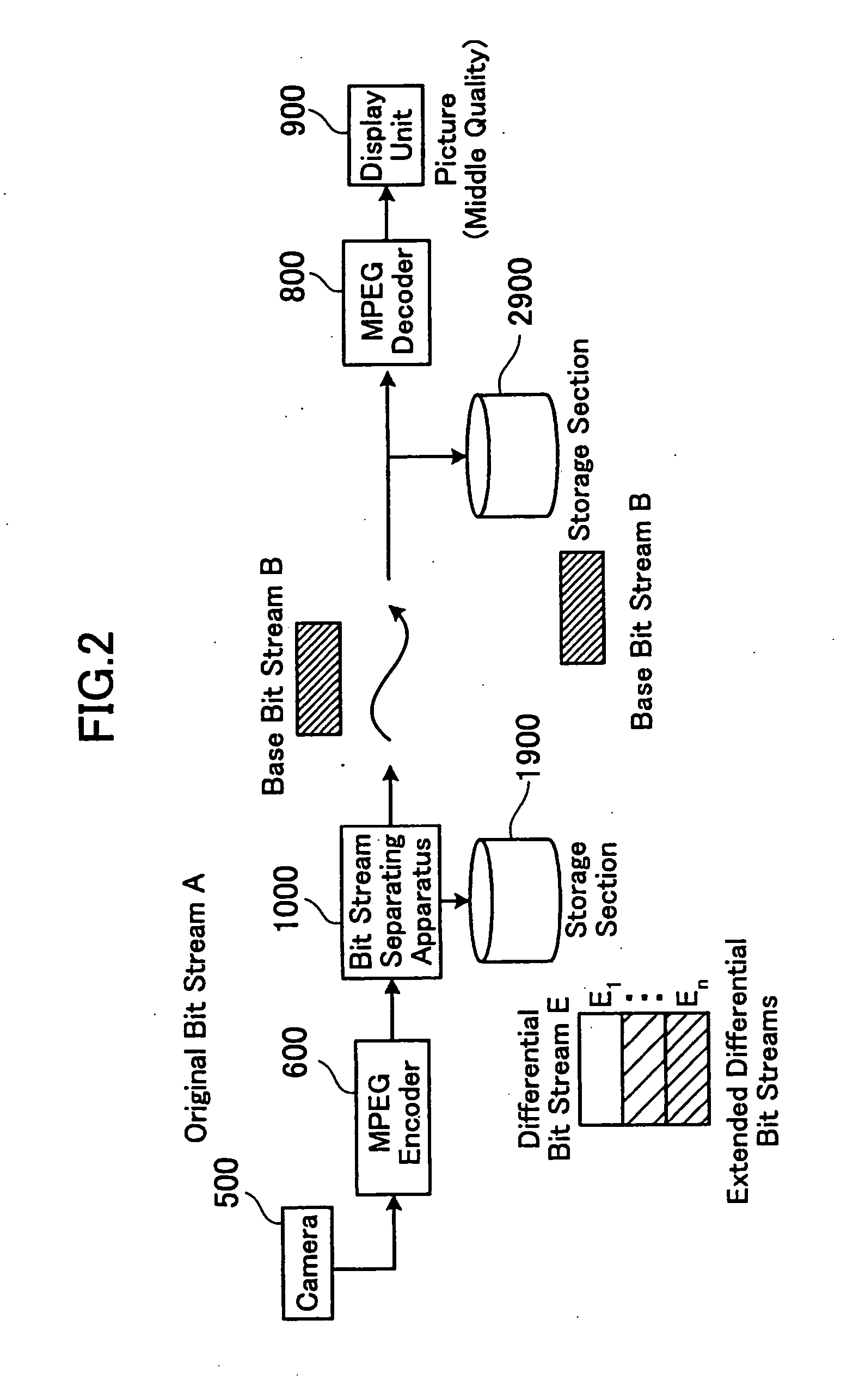Apparatus, system for, method of and computer program product for separating and merging coded signal
a technology of computer program, applied in the field of apparatus, system and computer program products for separating and merging coded moving picture sequence signals, can solve the problems of delay in the transcoding process, limited storage capacity of the input buffer of the decoder, and difficulty in processing the coded moving picture sequence signal of the decoder
- Summary
- Abstract
- Description
- Claims
- Application Information
AI Technical Summary
Benefits of technology
Problems solved by technology
Method used
Image
Examples
Embodiment Construction
[0162] A preferred embodiment of a coded signal separating apparatus, a preferred embodiment of a coded signal merging apparatus according to the present invention, a differential coded signal extracting apparatus according to the present invention, and a differential coded signal extracting apparatus according to the present invention will now be described in detail in accordance with the accompanying drawings.
[0163] Referring now to FIG. 1 of the drawings, there are shown a preferred embodiment of a coded signal separating apparatus according to the present invention as a bit stream separating apparatus 1000, a preferred embodiment of a coded signal merging apparatus according to the present invention as a bit stream merging apparatus 2000, and a differential coded signal extracting apparatus according to the present invention as a bit stream extracting apparatus 700. The bit stream separating apparatus 1000 is operative to transcode a first coded moving picture sequence signal i...
PUM
 Login to View More
Login to View More Abstract
Description
Claims
Application Information
 Login to View More
Login to View More - R&D
- Intellectual Property
- Life Sciences
- Materials
- Tech Scout
- Unparalleled Data Quality
- Higher Quality Content
- 60% Fewer Hallucinations
Browse by: Latest US Patents, China's latest patents, Technical Efficacy Thesaurus, Application Domain, Technology Topic, Popular Technical Reports.
© 2025 PatSnap. All rights reserved.Legal|Privacy policy|Modern Slavery Act Transparency Statement|Sitemap|About US| Contact US: help@patsnap.com



